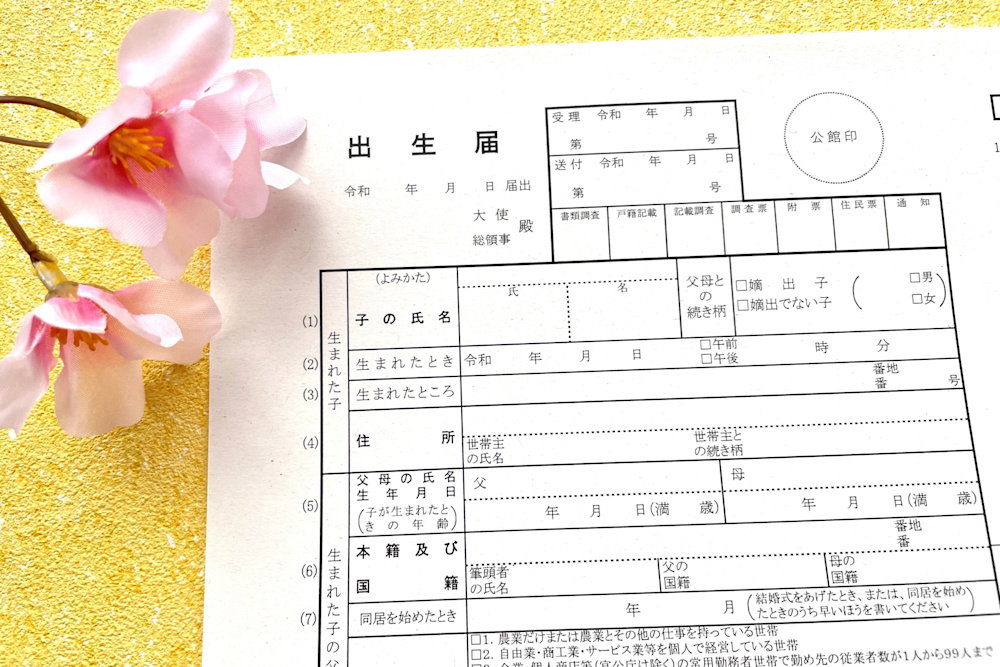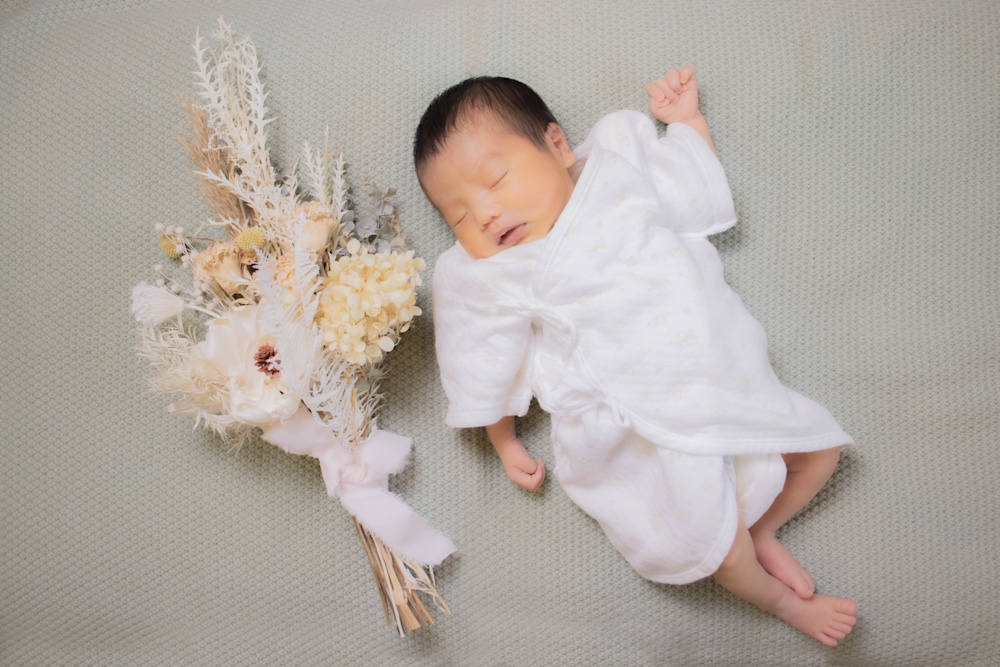Updated August 6, 2025
Giving Birth in Japan: The Ultimate Guide for Foreigners [2025]
Discovering you’re expecting while living in Japan as a foreigner can feel overwhelming, to say the least.
From figuring out where to find a pregnancy test in Japan to understanding the unique cultural practices around childbirth, there’s a lot to wrap your head around. But here’s the good news: Japan has one of the world’s most comprehensive support systems for pregnancy and childbirth.
In this article, we’ll cover the practical aspects, like pregnancy tests and doctor visits, the financial aspects with government support programs, and cultural differences that just might surprise you.
We’ll also touch on some uniquely Japanese traditions like satogaeri (returning to one’s parents’ house) and explain why epidurals are still relatively uncommon here. Let’s jump right in.
In this article: 📝
How to Check if You Are Pregnant: Where to Find a Pregnancy Test in Japan?
If you suspect you might be pregnant, the first step is confirming it with a home pregnancy test.
In Japan, pregnancy tests (called ninshin kensayaku or 妊娠検査薬 in Japanese) are widely available at most pharmacies, drugstores, some Don Quijote locations, and certain convenience stores that handle pharmaceuticals. You can also order them online through Amazon Japan or Rakuten for added privacy.
Japanese pregnancy tests work exactly like those in other countries. Most have either one large window or two separate boxes—one line means negative (陰性 or insei) and two lines mean positive (陽性 or yousei). The tests typically claim 99% accuracy when used one week after your missed period, though many women successfully use them earlier.
Popular brands include Clearblue (クリアブルー), dotest (ドゥーテスト), and HiTester. If you want to test before your missed period, you can ask a pharmacist for an early pregnancy test (早期妊娠検査薬 or souki ninshin kensa yaku), though you’ll need to provide some personal information to obtain these.
How to Confirm Pregnancy in Japan?
Once you get a positive result on your home test, it’s time to visit a clinic or hospital for official confirmation. Unlike some countries where you might wait several weeks, Japanese doctors want to see you relatively quickly to confirm the pregnancy via transvaginal ultrasound.
The magic moment comes when your doctor can detect a heartbeat, usually around 6-8 weeks. At this point, you’ll need to submit a pregnancy notification form (ninshin todoke or 妊娠届) to the city hall. This document is crucial for the next steps in your pregnancy journey.
Finding an English-speaking doctor can make this process much more comfortable for foreign mothers, so be sure to check out our dedicated guide for English-speaking OB-GYN specialists in Tokyo.
What to Do When You Find Out You’re Pregnant
If you've recently discovered that you're pregnant and feel uncertain about the necessary next steps, here’s what you need to know about the journey ahead.
Getting Your Essential Pregnancy Documents
After receiving your pregnancy notification from the doctor, your next stop is the city hall or ward office. This is where you’ll receive some of the most important support tools for your pregnancy journey.
The main item you’ll receive is the Maternal and Child Health Handbook (boshi kenko techo or 母子健康手帳), a comprehensive record that will document your entire pregnancy, the birth, and your child’s development up to six years old.
You can request this handbook in multiple languages, including English, Chinese, Korean, Portuguese, Spanish, Vietnamese, Thai, Indonesian, Tagalog, and Nepalese.
Along with the handbook, you’ll receive a maternity badge (maternity mark or マタニティマーク). Don’t underestimate this little tag! It’s designed to hang on your bag and signal to others, especially on public transportation, that you’re pregnant. Japanese society generally respects this badge, and you’ll find that people are more likely to offer you seats or assistance.
Pregnancy Check-up Coupons and Financial Support
Perhaps the most practical part of registering your pregnancy is receiving the booklet of coupons that subsidize pregnancy-related healthcare costs.
These typically include around 15 coupons for prenatal check-ups, covering ultrasounds, blood tests, and urine tests. You’ll also get specific coupons for gestational diabetes screening and dental check-ups.
Some municipalities even provide general coupons for services like babysitting, house cleaning, and professional help. The exact benefits vary by city, but most provide substantial support to help offset the costs of pregnancy care.

Important Things to Do Before Giving Birth
As your due date approaches, several crucial preparations will make your birth experience smoother and ensure you're taking full advantage of Japan's supportive benefits system.
Understanding the Lump-sum Maternity Allowance
One of Japan’s most generous benefits is the lump-sum maternity allowance (Shussan Ikuji Ichijikin or 出産育児一時金).
As of 2024, this program provides 500,000 yen per baby to help cover childbirth costs. Eligibility requirements are straightforward: you just need to be enrolled in National Health Insurance or Japanese Social Insurance and be pregnant for 85 days or longer.
For births not covered by the Obstetric Medical Compensation Scheme (typically when pregnancy hasn’t reached 22 weeks), the amount is 488,000 yen. Many hospitals can arrange direct payment, meaning they’ll handle the paperwork and you’ll only pay the difference between your total costs and the allowance amount.
If your medical expenses exceed certain thresholds during the tax year, you may also be able to claim deductions when filing your tax return, providing additional financial relief.
Planning Your Maternity Leave
Japan offers comprehensive maternity and paternity leave options that are worth understanding early in your pregnancy.
Essentially, you’re eligible for maternity leave starting 6 weeks (42 days) before your due date and continuing for up to 8 weeks (56 days) after birth.
During this time, you can receive approximately two-thirds of your wages per day as a childbirth allowance from your health insurance, provided your employer doesn’t pay your full salary during leave. The timing for applying for these benefits varies by municipality, so it’s worth checking with your local office early.
Important Things to Do After Giving Birth in Japan
Once your baby arrives, several time-sensitive administrative tasks need to be completed, especially for foreign families.
Birth Registration and Immigration Requirements
If neither parent is a Japanese citizen, you’ll need to handle several important registration tasks within specific timeframes.
First, you must register the birth (Shussho todoke or 出生届) at your local city office within 14 days. The hospital will provide a birth certificate that needs to be completed by medical staff, so make sure to ask your doctor to fill it out.
If both parents are foreign nationals, the baby needs to be registered at immigration within 30 days after birth. You’ll also need to report the birth to your home country’s embassy.
Understanding the Japanese family registry system can help clarify some of these requirements, so check out our guide.
Health Check-ups and Vaccinations for Your Infant
Japan has an excellent system of infant health check-ups and vaccinations that are largely covered by the government. These typically begin shortly after birth and continue regularly throughout early childhood. The Maternal and Child Health Handbook you receive after birth will be used to track all of these appointments and vaccinations.
How Often Do You Need to See the Doctor During Pregnancy?
Pregnancy care in Japan is notably thorough compared to many other countries.
In early pregnancy (weeks 1-23), you’ll typically visit the clinic once every 4 weeks. During the second trimester (weeks 24-35), this increases to once every 2 weeks. In the final stretch (week 36 and beyond), you’ll see your doctor weekly.
Early in pregnancy, you might find yourself going even more frequently, sometimes every 1-2 weeks, as doctors confirm the pregnancy progression, check for the fetal sac, and monitor the heartbeat. This frequency might seem high, but it provides constant reassurance and early detection of any issues.
One pleasant surprise for many foreign mothers is that ultrasounds are performed at virtually every visit. While this adds to the cost, it’s wonderful to see your baby’s development consistently throughout the pregnancy.
How Much Does it Cost to Give Birth in Japan: Giving Birth in Japan Cost
The cost of giving birth in Japan varies significantly depending on your chosen hospital and the type of delivery you have.
For a natural birth with a typical 4-6 day hospital stay, expect to pay between 500,000 to 700,000 yen on average. However, this can vary widely based on several factors.
Private hospitals and specialized maternity clinics generally cost more than general hospitals but often provide enhanced comfort, better food, private rooms, and more personalized care. A private room can add anywhere from 10,000 to 70,000 yen per day to your bill, depending on amenities like private bathrooms, couches, and entertainment systems.
Additional procedures increase costs significantly.
A cesarean section, vacuum extraction, or epidural (where available) will add to the base price. The good news is that the 500,000 yen lump-sum allowance covers a substantial portion of most births, and many families find their out-of-pocket expenses manageable.

Available Financial Support During Pregnancy
Beyond the lump-sum maternity allowance, working mothers can access additional financial support. The childbirth allowance system provides income replacement during maternity leave, and there are various local subsidies available depending on your municipality.
Some areas offer additional support for specific circumstances or provide vouchers for services like housekeeping, meals, or childcare. It’s worth checking with your local city office about what specific benefits are available in your area.
Are Epidurals Allowed in Japan: The Reality of Painless Delivery in Japan
One of the biggest cultural differences foreign mothers encounter is Japan’s approach to pain relief during childbirth.
Unlike countries where epidurals are routine, only about 6% of Japanese women use epidural anesthesia during delivery. This contrasts sharply with countries like the United States (60%+) and France (80%+).
Japanese culture values the concept of “gaman” (enduring/bearing hardship), and this philosophy extends to childbirth as well.
Many Japanese women and healthcare providers believe that experiencing labor pain is an important part of becoming a mother and creating a strong emotional connection with the baby.
This is why only around 480 facilities nationwide offer labor analgesia, and those that do often have restrictions such as limited hours, eligibility criteria for low-risk pregnancies, or advance booking requirements.
How Much Does an Epidural Cost in Japan?
For those determined to have a painless delivery in Japan, epidurals are available but come with some additional costs.
You can expect to pay between 100,000 to 150,000 yen on top of standard delivery costs. This is because the procedure is typically considered elective and isn’t covered by insurance, making it a significant out-of-pocket expense.
Many hospitals offering epidurals require advance planning and booking. You might need to attend special classes, undergo additional consultations, and commit to the service well before your due date. The process often involves scheduling an induced delivery rather than waiting for natural labor to begin.
Cultural Differences: The Pregnancy Experience in US vs Japan
We already mentioned that epidural isn’t quite as common here, but the differences between giving birth in Japan and the United States extend beyond just epidural availability.
Frequency of Ultrasounds and Monitoring
One area where Japan exceeds many other countries is in prenatal monitoring.
While US mothers typically receive 2-3 ultrasounds during pregnancy, Japanese mothers can expect ultrasounds at virtually every appointment, potentially 15 or more throughout the entire pregnancy.
This frequent monitoring provides constant reassurance and early detection of any issues.
Hospital Stay Length
Another significant difference is the length of hospital stays after delivery.
In the US, mothers with uncomplicated vaginal deliveries typically stay 1-2 days, while those with cesarean sections stay 3-4 days.
In Japan, the standard stay is much longer, typically 4-6 days for vaginal deliveries and 6-8 days for cesarean sections. This extended stay allows for more comprehensive postpartum care, breastfeeding support, and mother-baby bonding time.
Understanding Satogaeri (里帰り) or Returning Home for Birth: The Traditional Japanese Birth Practice
One uniquely Japanese tradition that foreign mothers often encounter is satogaeri (里帰り), which literally means “returning to one’s hometown.”
In the context of childbirth (satogaeri shussan), this refers to pregnant women returning to their parents’ home (typically the wife’s parents) for the final weeks of pregnancy and the first month or two after birth.
Traditionally, new mothers return to their family home around 32-34 weeks of pregnancy and stay for 1-2 months after delivery to receive physical and emotional support from experienced family members, particularly grandmothers, who have the best availability.
Modern Adaptations of Satogaeri
While satogaeri remains common in modern Japan, many families adapt the tradition to fit their circumstances.
Some mothers choose to have female relatives come to their home instead, especially when there are older children to consider. Others might do a modified version, spending just a few weeks at their parents’ home rather than the traditional longer stay.
For foreign mothers, this tradition can seem unusual, especially the idea of being separated from their partner for months. However, many who try it find the additional support invaluable, particularly first-time mothers who benefit from experienced guidance during those challenging early weeks.
Practical Tips for Foreign Mothers Giving Birth in Japan
Beyond understanding the medical and cultural aspects of pregnancy in Japan, there are several practical arrangements that can make your experience much smoother.
Setting Up Maternity Taxi Services
Since many families in urban Japan don’t own cars, arranging reliable transportation to the hospital during labor is crucial. Maternity taxi services (陣痛タクシ or jints takushii) are specifically designed for pregnant women and offer several advantages over regular taxis.
These services allow you to register your due date, home address, and destination hospital in advance. When you call during labor, you’ll jump to the front of the queue and reach a driver who’s been trained to handle pregnant passengers.
Do not worry: The taxis are equipped with towels and waterproof sheets in case your water breaks during the journey.
Major companies offering maternity taxi services include Nihon Kotsu, Ebara Kotsu, and KM Taxi. They typically charge around 500 yen on top of the standard meter fare for this specialized service. Registration is usually done online and is available 24 hours a day.
Make Use of The Postpartum Care Hotels
A relatively new option gaining popularity in Japan is postpartum care hotels (産後ケアホテル).
Essentially, these facilities provide specialized support for mothers and babies during the weeks following hospital discharge. They’re staffed by medical professionals and specialists who can help with everything from breastfeeding support to emotional care.
While it is, admittedly, more expensive than staying home, many municipalities now offer subsidies to help offset the costs of these facilities. They can be particularly valuable for mothers without family support nearby or those who want professional guidance during the transition to their homes.
Comprehensive Childcare Support
Looking ahead beyond birth, Japan offers extensive childcare support for international families.
The system includes everything from government-subsidized daycare centers (hoikuen) and kindergartens to monthly child allowances that continue until your child finishes junior high school.
What’s more, many municipalities also provide additional support like free or discounted health check-ups, vaccination programs, and even educational assistance.
Understanding these resources early can help you take advantage of all available benefits from day one.
Conclusion: So, What Happens If A Foreigner Gives Birth In Japan?
The key to a positive pregnancy and childbirth experience is understanding what to expect and preparing accordingly.
Luckily, Japan's generous financial support programs, frequent prenatal monitoring, and cultural practices that prioritize family support create an environment that many foreign mothers appreciate deeply.
Just remember that every pregnancy is unique. Whether you choose traditional approaches like satogaeri support or find your own path in between the cultural practices, the most important thing is feeling confident and at ease with your choices.
By planning ahead and embracing local resources, you’ll confidently navigate this transformative journey, creating lasting memories in Japan.
Get Job Alerts
Sign up for our newsletter to get hand-picked tech jobs in Japan – straight to your inbox.








